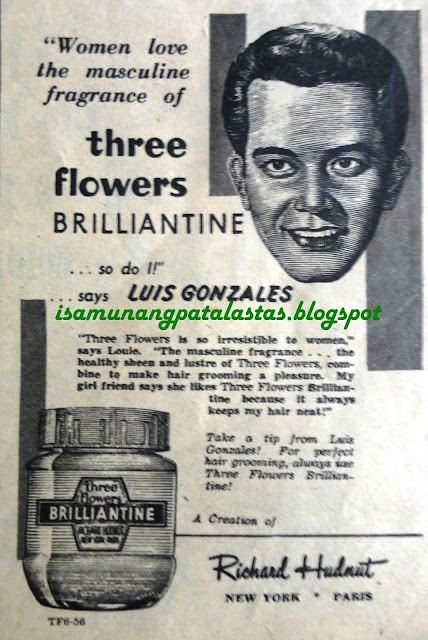 |
| MARCA PINA SOY SAUCE 2-Color Magazine Ad, 1966 |
One of the most popular soy sauce brands in the country—MARCA PIÑA Soy Sauce—began as a
backyard business employing 10 people in
Marulas, Bulacan back in the late 1940s.
The soy sauce product was first sold in the small neighborhood, but demand for MARCA PIÑA increased simply through
word-of-mouth, that National Soy Factory, the name of the small enterprise, had
to step up their production to answer the growing clamor for the product.
Incidentally, the PIÑA or pineapple is a symbol of welcome and hospitality. It is also
a symbol of royal privilege, and the pineapple name and icon was used by other
successful brands of food companies like Marca Piña Quezo and Marca Piña Hams.
By
the 1960s, the soy sauce was known nationwide, advertising actively in
magazines and leading publications.
WATCH THE 2006 VERSION OF THE
MARCA PIÑA SOY SAUCE "PIÑARAP BOY" TVC 30S
Government legalities mandated that the word “National”
should not be used for company names, so in 1973, National Soy Co., was
rebranded as Balanced Food Corporation.
It was in the 1970s that MARCA PIÑA Convey Advertising produce the now-classic “Piñakamasarap”
TV ad that featured a young boy mouthing “Piñarap!”
(who happened to be the son of the owner, Mr. Tian Sy) at the end of the commercial.
 |
| MARCA PINA SOY SAUCE "PINAKAMASARAP Ad, 1965 |
The
line caught on, and soon, everybody could recall and replay it—one of the most
memorable advertising catchphrases to this day. To immortalize the
unforgettable line that catapulted MARCA
PIÑA to greater prominence, Balanced
Food Corporation adopted the name Piñakamasarap Corporation in 1978.
Today, Piñakamasarap Corporation produces not just soy
sauce but other condiments and dips like MARCA
PIÑA Vinegar, Patis, Sukang Puti, Oyster Sauce and Kubo Sukang Paombong. Many
of these are exported the world over, enjoying the patronage of expatriate
Filipinos who, then, as now, still call the MARCA PIÑA super brand-“Piñarap!”.
As to the little boy who uttered the line in that classic as, he now sits as
the chief executive of the renown food manufacturing corporation.
SOURCES:
Convey
Advertising FB Page:
















